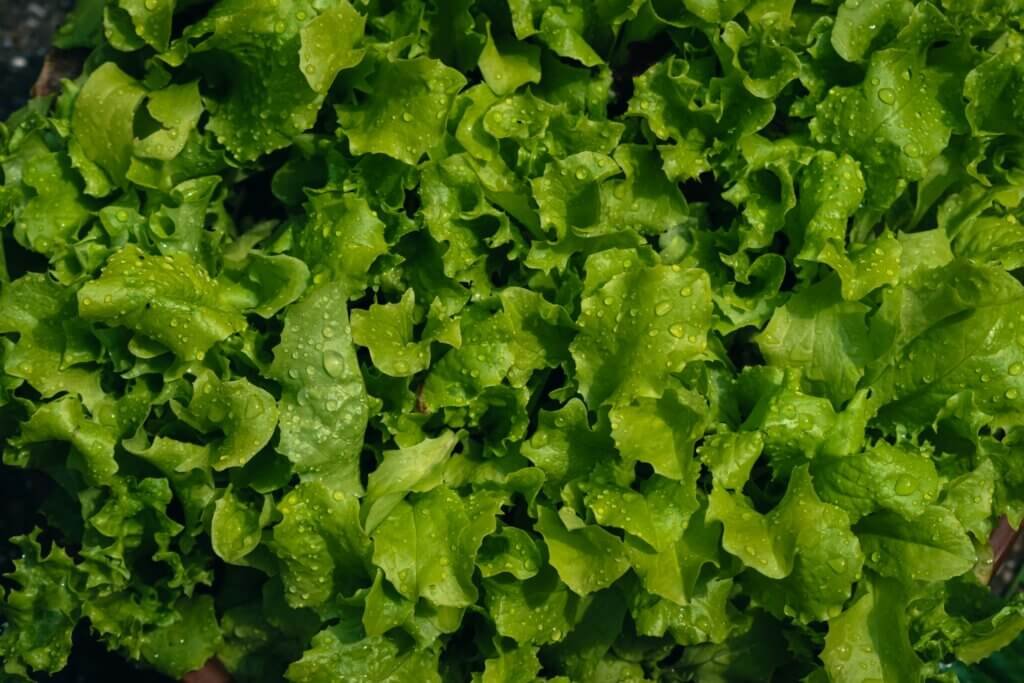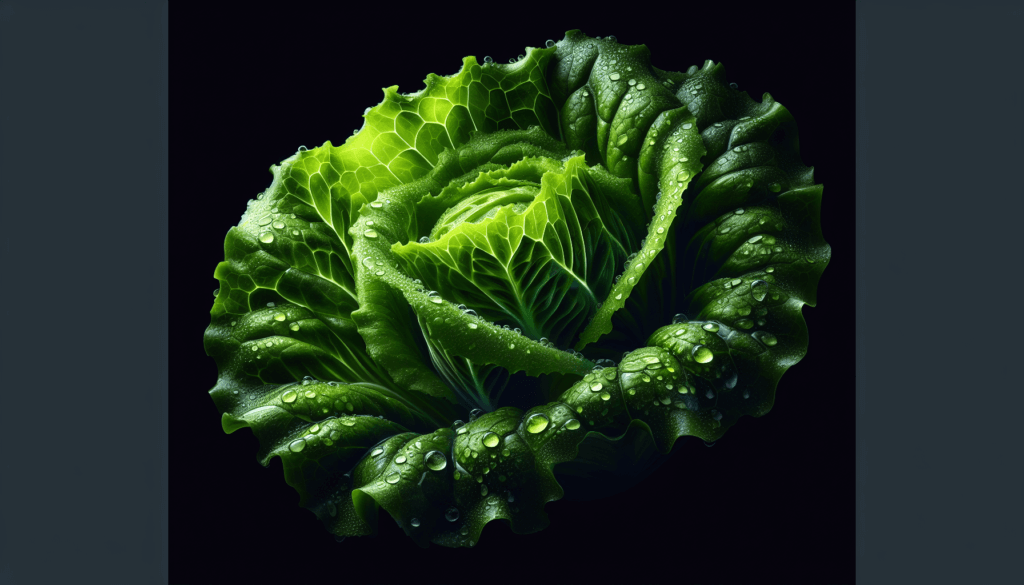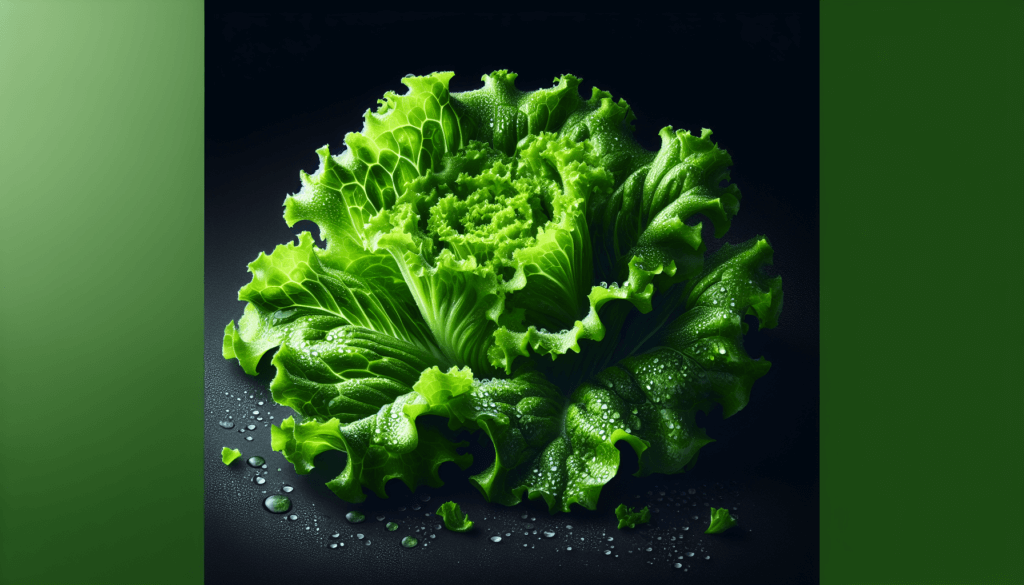Are you tired of buying a head of lettuce only to have it wilt and go soggy within a day or two? Don’t worry, we’ve got you covered with these top kitchen hacks for keeping lettuce crisp and fresh. From storing techniques to simple tricks, you’ll be able to enjoy crispy and crunchy lettuce in your salads all week long. Say goodbye to wasted greens and hello to a fridge full of fresh, vibrant lettuce with these easy tips and tricks.

Storing Lettuce Properly
Remove Damaged Leaves
To ensure that your lettuce stays fresh, it’s important to start by removing any damaged or wilted leaves. These leaves can contaminate the rest of the lettuce and cause it to spoil more quickly. Simply tear off any leaves that are discolored, slimy, or have visible signs of decay.
Wash and Dry Thoroughly
After removing the damaged leaves, it’s crucial to wash your lettuce thoroughly. This will help to remove any dirt, bacteria, or pesticide residue that may be present on the leaves. Fill a clean sink or large bowl with cold water and gently swish the lettuce around to loosen any dirt. Then, remove the lettuce from the water and rinse it under running water until clean.
Once the lettuce is clean, it’s important to dry it thoroughly before storing. Excess moisture can cause the leaves to become slimy and spoil more quickly. You can either use a salad spinner to remove the water or gently pat the lettuce dry with paper towels.
Wrap in Paper Towels
To keep your lettuce crisp and fresh, it’s a great idea to wrap it in paper towels before storing. The paper towels will help to absorb any excess moisture and keep the leaves dry. Start by laying a few paper towels flat on the counter and place the washed and dried lettuce on top. Then, gently wrap the lettuce in the paper towels, ensuring that all sides are covered.
Place in a Plastic Bag
After wrapping the lettuce in paper towels, it’s time to place it in a plastic bag. This will help to create a semi-sealed environment that will keep the lettuce fresh for longer. Choose a plastic bag that is large enough to accommodate the lettuce without squishing it. Gently place the wrapped lettuce in the bag and seal it, leaving a small opening to allow for some air circulation.
Store in the Refrigerator
Once the lettuce is wrapped and placed in a plastic bag, it’s ready to be stored in the refrigerator. The cool temperature of the fridge will help to slow down the spoilage process and keep the lettuce fresh for several days. Make sure to store the bag of lettuce away from any strong-smelling foods or produce that emits ethylene gas, as this can cause the lettuce to spoil more quickly.
Using Airtight Containers
Choose the Right Container
When using airtight containers to store lettuce, it’s important to choose the right container for the job. Look for a container that is large enough to accommodate the lettuce without squishing it, but not too big that it leaves excess air space. A container with a tight-fitting lid will help to create a sealed environment and keep the lettuce fresh for longer.
Line the Container
To further extend the shelf life of your lettuce, consider lining the container with a layer of paper towels. The paper towels will help to absorb any excess moisture and keep the lettuce crisp. Simply place a few paper towels at the bottom of the container before adding the lettuce.
Place Lettuce in the Container
Once the container is lined with paper towels, it’s time to add the lettuce. Make sure to arrange the leaves in a single layer and avoid overcrowding the container. Overcrowding can lead to moisture buildup and increase the chances of the lettuce spoiling.
Seal the Container Properly
After placing the lettuce in the container, ensure that the lid is tightly sealed. This will create an airtight environment and prevent any moisture or air from getting in. A good seal is essential for keeping the lettuce crisp and fresh for an extended period.
Store in the Refrigerator
Once the container is sealed, store it in the refrigerator to maintain the optimum temperature. The cool temperature helps to slow down the decomposition process and keeps the lettuce fresh and crisp. Remember to keep the container away from any strong-smelling foods or produce that can affect the flavor of the lettuce.
Utilizing Vacuum Sealing
Prepare the Lettuce
Before vacuum sealing lettuce, it’s important to prepare it properly. Start by washing the lettuce thoroughly to remove any dirt or contaminants. Gently pat the leaves dry with paper towels to remove excess moisture.
Place Lettuce in Vacuum Sealing Bag
Once the lettuce is dry, place it in a vacuum sealing bag. You can either use a pre-cut bag or a roll of vacuum sealing bag material. Arrange the lettuce in a single layer, making sure to leave some space at the top of the bag for sealing.
Remove Excess Air
To vacuum seal the bag, use a vacuum sealer machine or a handheld vacuum sealer. Follow the instructions provided with your specific device to remove the excess air from the bag. The vacuum sealing process will help to create an airtight environment and keep the lettuce fresh for a longer period.
Seal the Bag
Once the excess air is removed, seal the bag according to the instructions for your specific vacuum sealer. Ensure that the seal is tight and secure to prevent any air or moisture from getting in.
Store in the Refrigerator
After vacuum sealing, it’s time to store the bag of lettuce in the refrigerator. The cold temperature will help to maintain the freshness of the lettuce and extend its shelf life. Make sure to place the bag in a location where it won’t be crushed or punctured by other items in the fridge.
Freezing Lettuce
Wash and Dry the Lettuce
To freeze lettuce, start by washing it thoroughly and patting it dry with paper towels. This step helps to remove any dirt or contaminants that may be present on the leaves.
Separate Leaves
Once the lettuce is dry, separate the leaves. This will allow for easier portion control and prevent the leaves from freezing into a solid mass.
Blanch Lettuce
Blanching is a process that involves boiling vegetables briefly before freezing them. It helps to preserve the color, texture, and nutrients of the lettuce. Fill a large pot with water and bring it to a boil. Submerge the lettuce leaves in the boiling water for a few seconds, then quickly transfer them to a bowl of ice water to stop the cooking process.
Cool in Ice Water
After blanching, make sure to cool the lettuce leaves in ice water for a few minutes. This step helps to stop the cooking process and preserve the crispness of the leaves.
Dry and Package in Freezer Bags
Once the lettuce leaves are cool, gently pat them dry with paper towels to remove excess moisture. Then, package them in freezer bags, squeezing out as much air as possible before sealing. Make sure to label the bags with the date to keep track of their freshness.

Reviving Wilting Lettuce
Trim the Stems
If you find that your lettuce is wilted, don’t fret! There are ways to revive it and enjoy fresh, crispy lettuce once again. Start by trimming the stems of the lettuce. Cut about 1/4 inch from the bottom of the stems to allow the lettuce to absorb water more effectively.
Soak the Lettuce in Ice Water
After trimming the stems, fill a large bowl or sink with ice water. Submerge the lettuce leaves in the ice water and let them soak for about 20 minutes. The cold temperature of the water will help to revive the wilted lettuce and make it crisp again.
Dry the Leaves
Once the lettuce has soaked in the ice water, remove the leaves and gently pat them dry with paper towels. Ensure that the leaves are fully dry before proceeding to the next step.
Refrigerate for a Short Period
After drying the leaves, place them in a plastic bag and refrigerate for a short period of time, ideally around 1 hour. The cool temperature of the fridge will help to further refresh the lettuce and give it that crisp texture back.
Refresh Using Ice Bath
For an extra boost of crispness, you can refresh the lettuce using an ice bath. Fill a large bowl with ice water and submerge the lettuce leaves for a few minutes. This additional step can help to revive even the most wilted lettuce and bring it back to life.
Using Paper Towels
Line a Container with Paper Towels
To keep your lettuce fresh and crisp, consider utilizing paper towels. Start by lining a container with a layer of paper towels. This will absorb any excess moisture and prevent the lettuce from becoming soggy.
Place Lettuce on the Paper Towels
After lining the container, place the lettuce on top of the paper towels. Gently arrange the leaves in a single layer, ensuring that they don’t overlap too much.
Cover with More Paper Towels
Once the lettuce is in place, cover it with another layer of paper towels. This will help to absorb any excess moisture and keep the lettuce crisp.
Store in the Refrigerator
After covering the lettuce with paper towels, seal the container and store it in the refrigerator. The cool temperature will help to maintain the freshness of the lettuce and keep it crisp for an extended period. Remember to replace the damp paper towels with fresh ones whenever they become too wet.

Exploring Lettuce Crisper Tools
Choose a Lettuce Crisper
Lettuce crispers are specially designed containers that help to maintain the freshness and crispness of lettuce. These tools typically have compartments that allow for proper airflow and moisture control. Look for a lettuce crisper with adjustable humidity levels to ensure optimum storage conditions for your lettuce.
Prepare Lettuce Properly
Before placing the lettuce in the crisper, it’s crucial to prepare it properly. Remove any damaged or wilted leaves and wash the lettuce thoroughly. Pat it dry with paper towels to remove excess moisture.
Place Lettuce in the Crisper
Once the lettuce is prepared, place it in the lettuce crisper. Make sure to arrange the leaves in a single layer and avoid overcrowding. This will help to promote proper airflow and prevent moisture buildup.
Adjust Humidity Levels
Many lettuce crispers come with adjustable humidity levels. Depending on the type of lettuce you’re storing, you may need to adjust the humidity settings accordingly. Leafy greens generally prefer higher humidity levels, while iceberg lettuce prefers lower humidity.
Store in the Refrigerator
After placing the lettuce in the crisper and adjusting the humidity levels, store it in the refrigerator. The crisper will help to maintain the ideal storage conditions and keep the lettuce fresh and crisp. Check the humidity levels regularly and adjust as needed to extend the shelf life of the lettuce.
Avoiding Moisture
Dry Lettuce Thoroughly
To prevent moisture buildup and keep your lettuce fresh and crisp, it’s important to dry it thoroughly before storage. After washing the lettuce, use a salad spinner or gently pat it dry with paper towels. Removing excess moisture will help to extend the shelf life of the lettuce.
Line the Storage Container
Before placing the lettuce in a storage container, line it with dry paper towels. The paper towels will help to absorb any excess moisture that may accumulate and keep the lettuce crisp. Make sure to line the bottom as well as the sides of the container.
Use a Salad Spinner
A salad spinner is a handy tool for efficiently drying lettuce. After washing the lettuce, place it in the salad spinner and spin it to remove excess water. This will help to prevent moisture buildup and keep the lettuce fresh for longer.
Avoid Washing Before Storage
One of the key ways to avoid moisture buildup is to avoid washing the lettuce right before storage. While it’s important to wash the lettuce before consumption, doing so before storing can introduce excess moisture and cause the lettuce to wilt more quickly. Instead, wash the lettuce right before you plan to use it.
Place Dry Paper Towels in the Container
To further absorb excess moisture and maintain the crispness of the lettuce, place dry paper towels in the storage container. These paper towels will help to absorb any moisture that may accumulate and extend the shelf life of the lettuce. Replace the paper towels whenever they become damp or wet.

Separating Lettuce Leaves
Wash Lettuce Leaves
To separate lettuce leaves, start by washing them thoroughly. Fill a sink or large bowl with cold water and gently swish the leaves around to remove any dirt or debris. Rinse the leaves under running water to ensure they are clean.
Gently Remove the Leaves
Once the lettuce leaves are clean, gently remove them one by one. Take care to avoid tearing or damaging the leaves. Separating the leaves allows for easier portion control and makes it easier to store them separately.
Pat Dry with Paper Towels
After separating the leaves, pat them dry with paper towels. This step is crucial to remove excess moisture that can lead to wilting or spoiling. Gently press the paper towels against the leaves to absorb any water.
Store the Leaves Separately
Once the lettuce leaves are dry, store them separately. You can either wrap each leaf individually in paper towels or place them in separate resealable bags. This will help to maintain their freshness and allow you to use them as needed without affecting the other leaves.
Use within a Few Days
When storing lettuce leaves separately, it’s important to use them within a few days. While this method can help to extend the shelf life of the leaves, they will still deteriorate over time. Make sure to check the leaves for any signs of spoilage before using them.
Using Ziplock Bags
Choose the Right Size
When using ziplock bags to store lettuce, it’s important to choose the right size for your needs. The bag should be large enough to accommodate the lettuce without overcrowding but small enough to minimize excess air space. Consider the quantity of lettuce you have and choose the appropriate bag size accordingly.
Place Lettuce in a Ziplock Bag
After washing and drying the lettuce, place it in a ziplock bag. Gently arrange the leaves in a single layer, ensuring that they don’t overlap too much. If you have a large quantity of lettuce, consider using multiple ziplock bags to avoid overcrowding.
Squeeze Out Air
To create an airtight environment, squeeze out as much air as possible from the bag before sealing it. This will help to keep the lettuce fresh and prevent excess moisture buildup.
Seal the Bag
Once the air is squeezed out, seal the ziplock bag securely. Ensure that the seal is tight to prevent any air or moisture from getting in.
Store in the Refrigerator
After sealing the bag, store it in the refrigerator to keep the lettuce fresh. The cool temperature will help to slow down the spoilage process and maintain the crispness of the leaves. Make sure to label the bag with the date to keep track of freshness.
In conclusion, there are several methods and techniques you can use to store lettuce properly and keep it crisp and fresh for an extended period. Whether you choose to wrap it in paper towels, use airtight containers, vacuum seal it, freeze it, or utilize other kitchen hacks, the key is to remove excess moisture and create the ideal storage environment. By following these tips and tricks, you can enjoy fresh, crisp lettuce in your salads, sandwiches, and other dishes for days to come.



